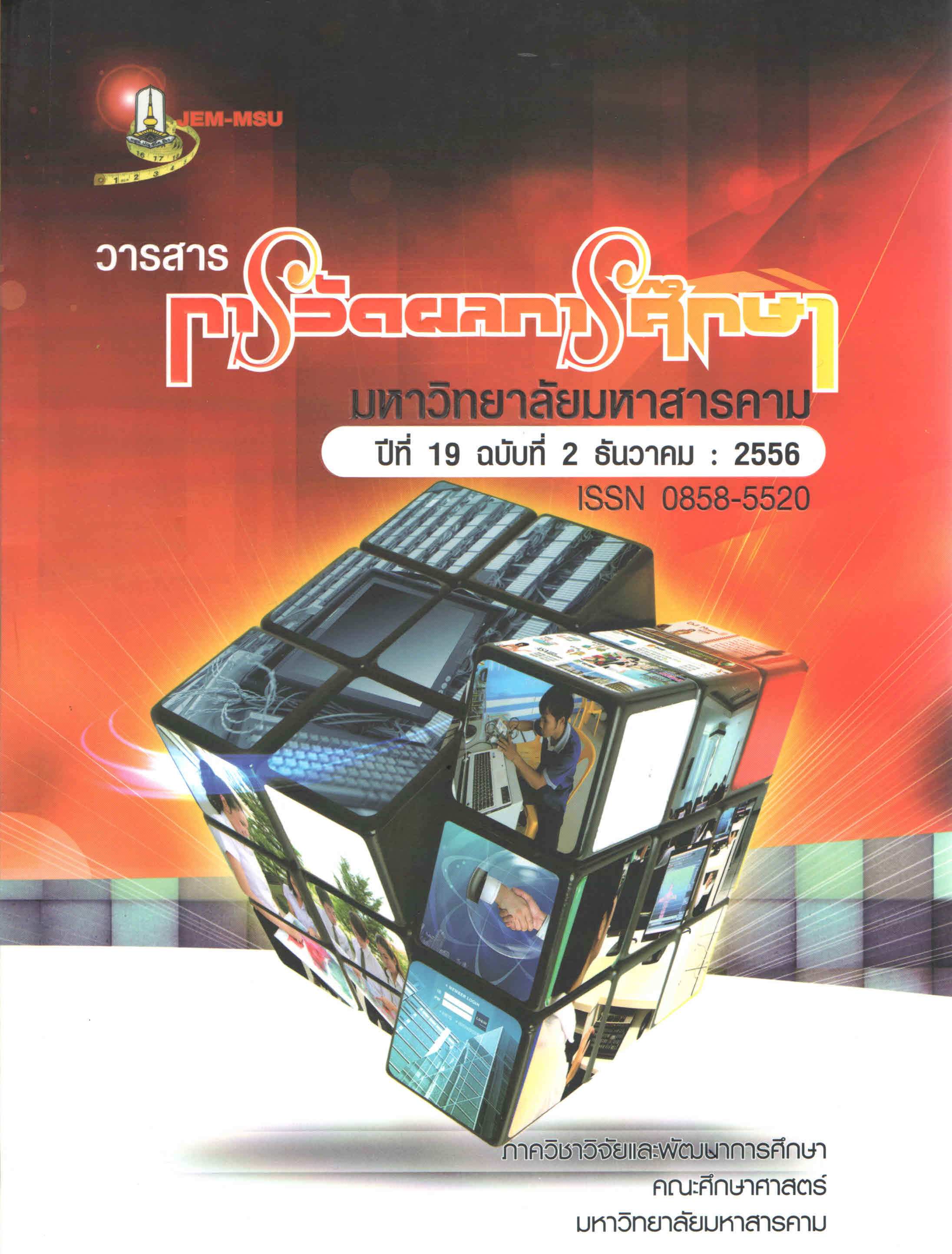Life Skills Test Construction on for Grade 6 Student
Main Article Content
Abstract
The rapid progress of human society and the economy culture political. Especially
science and Technology. As a result, there are many factors to Questionable and Barrier To
create a better quality of life for youth Thailand. The purpose of this study was to Development
and quality of Life Skills Test Construction on for Grade 6 Student and to construct
norms of Life Skills Test Construction on for Grade 6 Student. The samples consisted of
370 of Grade 6 Student, under the Office of Si Sa Ket Education Service Area Zone 1 in
the Second semester of the academic year 2012, obtained using the multi-stage random
sampling technique. One types of the instrument used in this study were : with totally
48 items in 4 aspects, The instruments were experimented 3 times, to analyze for difficulty,
discriminating powers And was to find out reliabilities, construct validities, and construction
of norms in a form of T - norm scores ; and extension of T - scores using predictive
equations.
The research findings were as follows :
1. In the first and second experiments, discriminating powers of Life Skills Test
Construction on for Grade 6 Student with the values, ranging 1.17 to 4.70, 1.06 to 4.85 respectively.
2. In the Third experiments, discriminating powers of Life Skills Test Construction on
for Grade 6 with the values, ranging 1.15 to 5.74 reliabilities of 0.83. Norm scores of the scale
were : with T-norms ranging T26 ถึง T76. The equations are linear is TC = - 131 + 0.91x
Therefore, teachers and parents can be used Measurement results as a guide for
guidance. And guidelinesto Development and quality of Life Skills Test Construction
Article Details
The content and information contained in the published article in the Journal of Educational Measurement Mahasarakham University represent the opinions and responsibilities of the authors directly. The editorial board of the journal is not necessarily in agreement with or responsible for any of the content.
The articles, data, content, images, etc. that have been published in the Journal of Educational Measurement Mahasarakham University are copyrighted by the journal. If any individual or organization wishes to reproduce or perform any actions involving the entirety or any part of the content, they must obtain written permission from the Journal of Educational Measurement Mahasarakham University.


